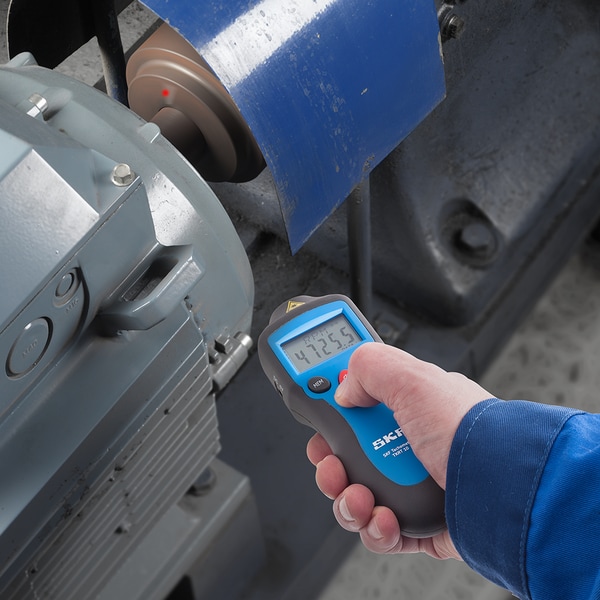Tachometer Buying Guide: Features to Seek and Best Brand names
Wiki Article
The Importance of a Tachometer in Monitoring Engine Speed and Performance in Automotive Applications
In the world of automobile design, the tachometer stands as a crucial instrument in the vehicle driver's arsenal, offering a straight home window into the internal functions of a car's engine. Beyond its feature as a plain gauge of revolutions per min (RPM), the tachometer serves as a vital tool for enthusiasts and professionals alike, using real-time understandings into engine performance and health and wellness.Significance of Monitoring Engine RPM
Keeping an eye on engine RPM, or changes per minute, is a critical facet of auto upkeep and performance examination. Engine RPM directly associates with the rate at which the engine's crankshaft turns, suggesting how promptly the engine is running.Additionally, keeping an eye on engine RPM is vital for efficiency evaluation in racing and high-performance lorries. In recap, monitoring engine RPM is not only crucial for identifying issues but likewise for maximizing engine performance in numerous automotive applications.

Benefits of Real-Time Data
In automobile applications, real-time data plays a vital duty in offering instant insights into the performance and condition of the automobile. By constantly checking different parameters such as engine rate, temperature, gas consumption, and a lot more, real-time data supplies many advantages that add to enhanced performance and safety when traveling.
In addition, real-time information assists in efficiency optimization by offering instant feedback on driving routines and engine effectiveness. Drivers can change their behavior in real-time based on this info to achieve far better fuel economic climate and extend the life-span of their lorry.

Additionally, real-time information plays an essential duty in contemporary automobile diagnostics, allowing professionals to promptly detect and attend to breakdowns. This causes reduced downtime, lower maintenance costs, and eventually, enhanced overall vehicle reliability and durability (tachometer). By harnessing the power of real-time data, auto stakeholders can make enlightened decisions that favorably influence both the efficiency and longevity of the automobile
Effect On Gear Shifts
Reliable equipment changes in automotive applications dramatically affect general performance and driving experience. The tachometer plays a crucial role in optimizing equipment shifts by supplying real-time engine speed data to the chauffeur. When coming close to the redline on the tachometer, it signals the vehicle driver to upshift to stop over-revving the engine and triggering prospective damages. On the various other hand, downshifting at the read the article ideal moment can help keep the engine in its power band, making certain responsive acceleration when required.Moreover, the tachometer aids in attaining smoother gear transitions, particularly in manual transmissions. By monitoring engine speed, vehicle drivers can perform gear shifts at the optimal RPM range, lowering snagging motions and reducing wear on the transmission parts. This accuracy in gear adjustments see this website not only enhances driving convenience yet additionally adds to sustain efficiency.
Enhancing Gas Effectiveness
Offered the essential duty the tachometer plays in enhancing equipment changes for efficiency and engine wellness, it straight contributes to making the most of gas performance in automobile applications. By offering real-time comments on engine rate, the tachometer assists motorists in preserving the most efficient RPM range for gas economy. When vehicle drivers continually monitor the tachometer and readjust their driving habits appropriately, they can prevent unnecessary gas intake triggered by over-revving or hauling the engine.Furthermore, the tachometer assists motorists determine the most fuel-efficient equipment to be in at any kind of given minute, protecting against the engine from working harder than needed. In verdict, the tachometer offers as an important device in enhancing fuel efficiency by promoting optimal driving practices and recognizing locations for improvement in the vehicle's performance.

Making The Most Of Engine Durability
The original site tachometer's duty in monitoring engine rate and performance is critical in making certain the durability of automotive engines. By using the tachometer successfully, chauffeurs can enhance engine longevity through mindful RPM management. Constantly revving an engine expensive can result in extreme deterioration on critical components, such as the pistons, valves, and bearings. Gradually, this can cause reduced engine performance and possible malfunctions. Checking the tachometer permits drivers to remain within the suggested RPM range for their automobile, preventing unnecessary strain on the engine and extending its lifespan.
Conclusion
In final thought, the tachometer plays a critical function in monitoring engine rate and performance in automotive applications. By providing real-time information on RPM, it allows for efficient gear changes, boosted gas performance, and taken full advantage of engine durability. This tool is necessary for preserving optimum engine performance and ensuring the total capability of a car.Report this wiki page